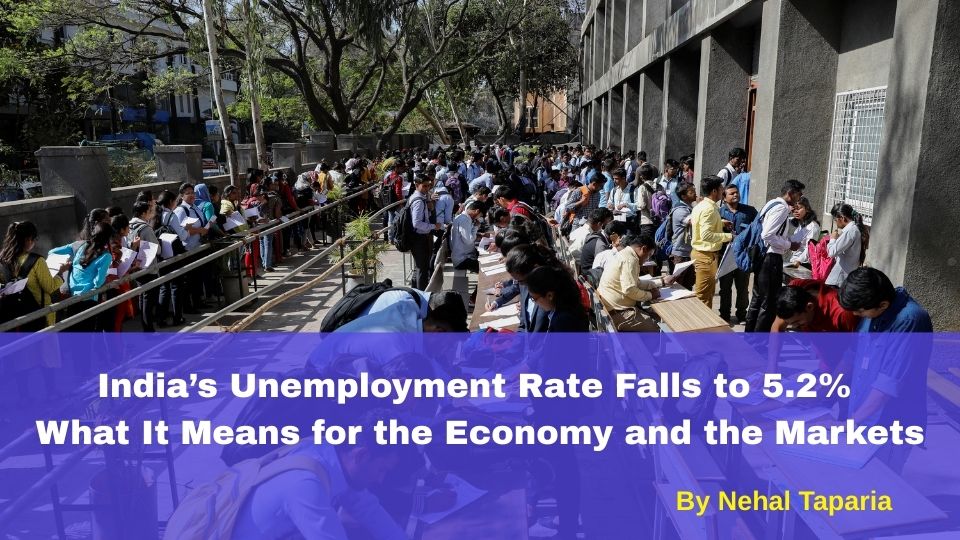India’s Unemployment Rate Falls to 5.2%—What It Means for the Economy and the Markets”

India’s Unemployment Rate Falls to 5.2%—What It Means for the Economy and the Markets”
Introduction
India’s labour market appears to be showing signs of improvement. According to the latest Periodic Labour Force Survey PLFS, the unemployment rate declined from 5.6% in June to 5.2% in July 2025 . This change signals potential revival in employment conditions.
What the Numbers Reveal
- Unemployment Trend: The unemployment rate stood steady at 5.6% in both May and June before falling in July , .
- WPR & LFPR Improve: July also saw a notable uptick in labour force participation LFPR to 54.9% and the Worker Population Ratio WPR rising to 52% .
- Labour Market Stability: Monthly data like this provides timely insights into dynamic shifts across informal/formal sectors and rural–urban divides.
Caveats and Skepticism
- Methodological Concerns: Independent economists question the accuracy of these figures, noting that anyone working even one hour per week counts as employed. A poll found that over 70% of experts believe the true unemployment rate may be double, possibly around 10% or more .
- Quality vs. Quantity: Even if employment improves, wage stagnation and underemployment remain significant challenges.
Market Implications: A 360° View
- Consumer Sentiment and Demand: Lower unemployment can boost household incomes and consumption—positive for retail, FMCG, and other domestic-facing sectors.
- Manufacturing & Exports: Strong labour conditions support manufacturing momentum, which already hit a 16-month high in July PMI at 59.1 .
- Policy Outlook: A tighter labour market may curb expectations of interest rate cuts, especially with inflationary pressures alive—input costs are rising .
- Investor Confidence: Improved employment numbers can bolster equity markets, especially sectors sensitive to discretionary spending and domestic growth.
- Sectoral Divergence: While manufacturing is buoyant, some sectors like services or capital goods may lag behind due to global uncertainties and cooling business confidence .
Conclusion
July’s dip in unemployment to 5.2% brings welcome relief—but it's not the full story. As always, the real test lies in job quality, wage growth, and sustainable sectoral hiring. Markets may cheer short-term growth signals, but structural labour reforms and inclusive employment generation are key for long-term prosperity.
By Nehal Taparia
This content is for educational and knowledge purposes only and should not be considered as investment or Trading advice. Please consult a certified financial advisor before making any investment or Trading decisions.
Our Recent FAQS
Frequently Asked Question &
Answers Here
1. What is India’s current unemployment rate?
India’s unemployment rate dropped to 5.2% in July 2025, from 5.6% in June
2. Does this mean jobs are genuinely improving?
3. What about workforce participation?
4. How does this affect the stock market?
5. Are all sectors benefiting equally?
6. Should the RBI change its policy now?
Copyright © By Empirical F&M Academy. Design & Developed by Techno Duniya


.jpg)


.jpeg)




